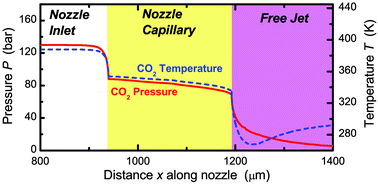On-line in-situ characterization of CO2RESS processes for benzoic acid, cholesterol and aspirin
Abstract
Rapid expansions of supercritical solutions (

* Corresponding authors
a
Institut für Physikalische Chemie, Universität Göttingen, Tammannstrasse 6, 37077 Göttingen, Germany
E-mail:
tlenzer@gwdg.de, koum@gwdg.de
Fax: +49 551 393150
Tel: +49 551 3912598
Rapid expansions of supercritical solutions (

 Please wait while we load your content...
Something went wrong. Try again?
Please wait while we load your content...
Something went wrong. Try again?
J. J. Harrison, C. Lee, T. Lenzer and K. Oum, Green Chem., 2007, 9, 351 DOI: 10.1039/B612055E
To request permission to reproduce material from this article, please go to the Copyright Clearance Center request page.
If you are an author contributing to an RSC publication, you do not need to request permission provided correct acknowledgement is given.
If you are the author of this article, you do not need to request permission to reproduce figures and diagrams provided correct acknowledgement is given. If you want to reproduce the whole article in a third-party publication (excluding your thesis/dissertation for which permission is not required) please go to the Copyright Clearance Center request page.
Read more about how to correctly acknowledge RSC content.
 Fetching data from CrossRef.
Fetching data from CrossRef.
This may take some time to load.
Loading related content
